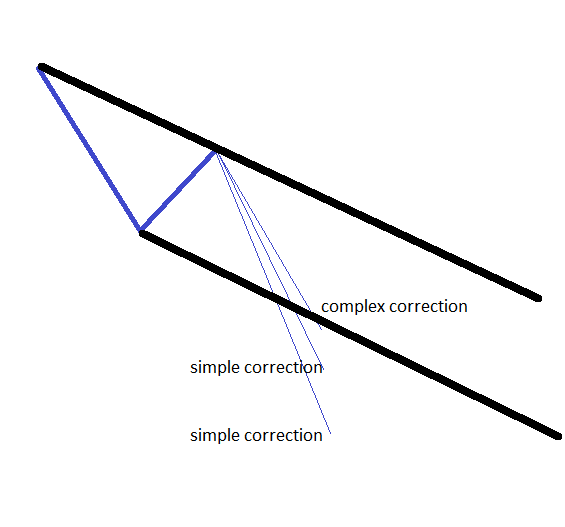How to Channel with Zig Zags
Elliott Waves theory without channelling is not possible, and this tells us much about the importance of channelling. Having said that, channeling is mostly used in zigzags or zigzag family patterns. Technical analysis, in general, has many applications when it comes to channelling, and such a concept has a great advantage: It is extremely visible. It means that once a channel is drawn correctly, traders will have an easy time identifying places to go long or short. For example, a bullish trend almost always has a channelling component, and traders will use any dips to add to an existing position or to enter a new trade. The same is valid in a bearish trend, when traders will look to buy when the price is reaching the higher edge of a channeling. With Elliott Waves, channeling refers to many patterns, but the overall concept is a bit different from how channeling is viewed in general. According to Elliott, there are specific rules about how to build a channel, namely where to start drawing a trend line and when it should end. Moreover, different patterns have different channeling components. For example, if in a double or triple zigzag, the channel must have two parallel lines, but in a double or a triple combination parallelism is not mandatory. The same thing is valid in a double or a triple flat, where the two lines are rarely parallel, but the patterns are considered to be channelling.
| Broker | Bonus | More |
|---|
Interpreting a Zigzag
Elliott Waves theory is a logical process, and this process is the sum of small things that lead to other things, which in turn lead to something else, and so on. If one thing is wrongly interpreted, chances are that the whole count will end up in a terrible loss. The same thing is valid when trying to interpret a zigzag, as the trader needs to follow a logical process. There are two mandatory steps to follow to reach the right conclusion that should set the stage for the proper count.
Expecting a Corrective Wave
It is essential to know where you are with the count. It is mandatory at this stage to expect a corrective wave to form. Of course, we will not know right from the start whether the correction is a complex or a simple one, but we should at least be sure that a corrective wave is forming. To look for a corrective wave forming, it must be the case that market formed the following patterns prior to this correction:
- An impulsive wave of the same degree or a larger degree ended.
- The a-wave of a simple or complex correction ended.
- The c-wave of a complex correction ended.
The next thing to do is to look at the nature of the first move to follow the three situations mentioned above. Remember the question that is to be asked all the time when trading with Elliott: Is this move a corrective one or an impulsive one? If the move is interpreted as being an impulsive one, but, because of the previous logic, this impulsive wave should be part of a complex correction, it means we are looking for a possible zigzag forming. At this very moment, we don’t know whether the zigzag is going to be a simple or a complex correction; and we only have in front of us the first five waves of this zigzag, or the a-wave of the overall a-b-c that makes a zigzag pattern.
Using the Channelling Component

All these things are the result of correctly interpreting a zigzag and connecting each step with the channeling component. Channelling has thus been used to identify the proper count, and not in the classical way in which other technical analysis areas use it.
This article shows once more that Elliott Waves theory is a complex one, even though the overall basic principle sounds so simple. As mentioned at the start of our section dedicated to Elliott, this is just an illusion.
Other educational materials
- What is Elliott Waves Theory?
- Defining Impulsive Waves
- Defining Corrective Waves
- Use the Fibonacci Extension Tool in Elliott Waves Theory
- Different Fibonacci Levels Important When Trading with Elliott
- Trading Different Types of Extended Waves
- Placing Pending Orders When Trading with Elliott
Recommended further readings
- Identification through technical analysis: A study of charting and non-professional investors. Roscoe, P., & Howorth, C. (2009). Accounting, Organizations and Society, 34(2), 206-221.


